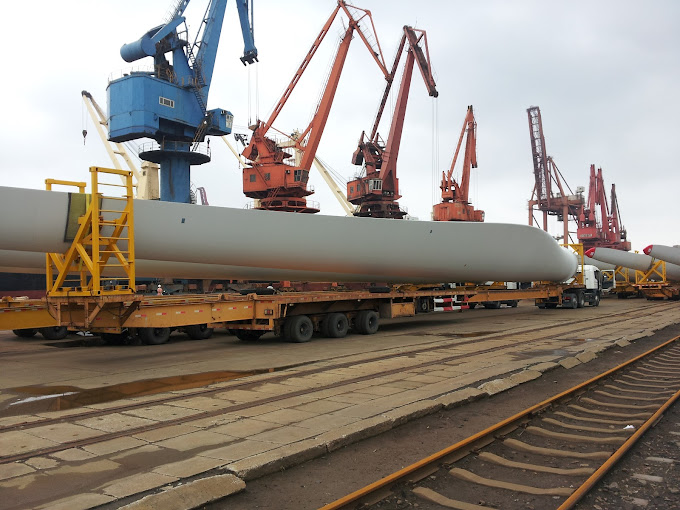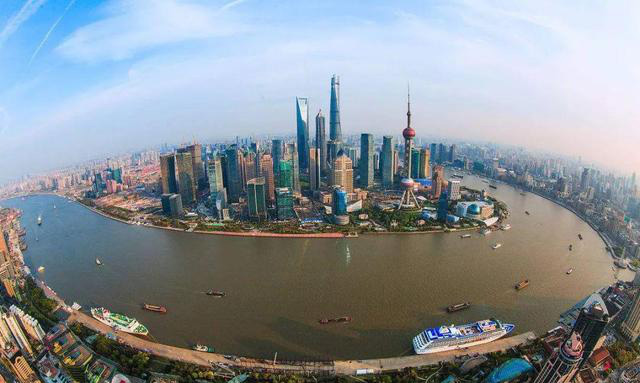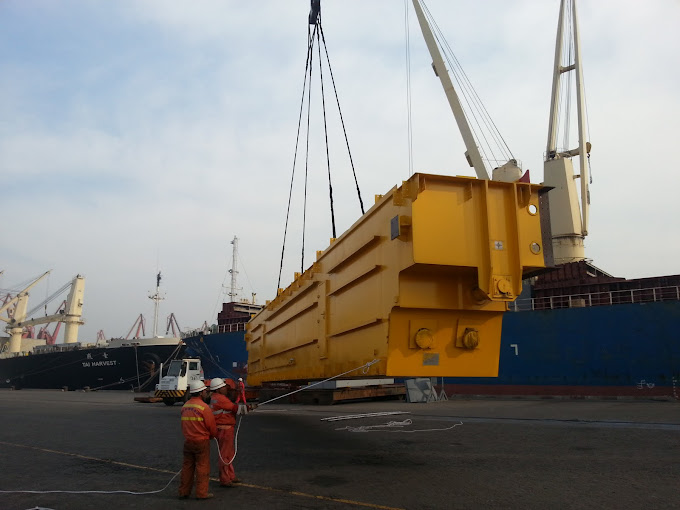China's Top 10 Ports
As the world's largest trading nation, China relies on its ports as critical gateways connecting global supply chains. Based on 2024 data from the International Chamber of Shipping (ICS), this analysis explores the functional positioning, regional advantages, and global supply chain contributions of China’s top 10 ports.
1. Eastern Shipping Hub – Port of Ningbo-Zhoushan
Strategic Role: The world’s first port exceeding 1.2 billion tons in annual throughput, serving as China’s largest bulk commodity storage and transshipment base.
Key Functions:
- Deep-Water Advantage: Boasts 183 km of deep-water berths (depth >10m), accommodating 400,000-ton ore carriers and 200,000-ton oil tankers.
- Diversified Operations: Handles strategic cargo including iron ore (400+ million tons/year), crude oil (120 million tons), and LNG (6 million tons), while storing 80 million tons of coal and 30 million tons of grain annually for East China.
- Regional Impact: Links the Yangtze River Economic Belt with the Yangtze River Delta via the "Yiwu-Ningbo-Zhoushan" logistics corridor, integrating port and inland hub operations.
2. Coastal Trade Core – Port of Shanghai
Strategic Role: A top-3 global container port and China’s Belt and Road gateway.
Key Functions:
- Global Network: Connects 1,200+ global ports with 47 million TEUs throughput in 2024; Yangshan Phase IV automated terminal reduces operational costs by 30%.
- Industrial Synergy: Collaborates with Shanghai Free Trade Zone to develop maritime services (e.g., ship leasing, insurance), generating over $280 billion in annual economic value.
- Regional Impact: Reduces logistics costs by 25% for Yangtze River Basin cargo through river-sea intermodal transport.
3. South China Container Hub – Port of Shenzhen
Strategic Role: Core port of the Guangdong-Hong Kong-Macao Greater Bay Area, facilitating cross-border e-commerce and high-value exports.
Key Functions:
- Dual-Harbor Model: Western ports (Shekou, Chiwan) handle 28 million TEUs annually, while Yantian’s natural deep bay focuses on trans-Pacific routes.
- Innovation Pilot: Leads "One Bay, One Port" initiative for seamless cargo transfers across Greater Bay Area ports, cutting cross-border e-commerce delivery times to 72 hours.
- Regional Impact: Supports Shenzhen’s electronics industry ($500+ billion in exports), connecting west Pearl River Delta manufacturing clusters via the Shenzhen-Zhongshan Bridge.
4. Millennium Trade Port – Port of Guangzhou
Strategic Role: South China’s comprehensive hub and the world’s only continuously operating port for 2,000 years.
Key Functions:
- Historical Legacy: Operated as a Tang Dynasty maritime hub; Nansha automated terminal achieves 400 TEUs/hour efficiency.
- Industrial Integration: Adjacent to Huangpu auto industry base, exporting 500,000+ vehicles annually (1/3 of China’s total).
- Regional Impact: Builds a consumption economy hub via Nansha Cruise Terminal (1.5 million annual passengers) and cold chain logistics center.
5. River-Sea Intermodal Hub – Port of Suzhou
Strategic Role: Largest inland port on the Yangtze River Economic Belt and China’s first billion-ton inland port.
Key Functions:
- Consolidated Power: Integrates Zhangjiagang (350 million tons), Changshu (220 million tons), and Taicang (280 million tons) into a "three-port-one-city" system.
- Multimodal Connectivity: Handles 18% of China’s inland container volume via the Grand Canal linking the Yangtze and Taihu Basin.
- Regional Impact: Supports Suzhou Industrial Park ($420+ billion GDP), enabling global supply chain access for the Southern Suzhou precision manufacturing and biotech industries.
6. Bohai Bay Shipping Gem – Port of Qingdao
Strategic Role: Northeast Asia’s international shipping hub and the Yellow River Basin’s only deep-water outlet.
Key Functions:
- Specialized Terminals: Qianwan automated port handles 20 million TEUs annually; Dongjiakou’s 400,000-ton ore terminal processes 120 million tons of iron ore.
- Energy Hub: Supplies 50 million tons of crude oil and operates an LNG terminal to meet North China’s clean energy demands.
- Regional Impact: Partners with the SCO Demonstration Zone to expand Belt and Road cooperation, with 3,000+ China-Europe Railway Express trips annually.
7. New Eurasian Land Bridge Gateway – Port of Rizhao
Strategic Role: Belt and Road convergence hub and the shortest outlet for central/western China.
Key Functions:
- Bulk Commodity Base: Shijiu processes 280 million tons of metal ore annually; Lanshan handles 150 million tons of crude oil.
- Rail Integration: Connects Shanxi-Shaanxi-Mongolia energy bases via the Wari Railway for "west-to-east coal" and "north-to-south ore" transport.
- Regional Impact: Drives Shandong’s industrial transformation, supporting Rizhao Iron & Steel (40 million tons capacity) and petrochemical clusters.
8. Man-Made Deepwater Marvel – Port of Tianjin
Strategic Role: Northern China’s international shipping core and maritime gateway for Beijing-Tianjin-Hebei integration.
Key Functions:
- Engineering Feat: World’s largest 300,000-ton deep-water port built on silt shoals, achieving zero vessel waiting time via smart scheduling.
-
China-Europe Railway Express: "Tianjin-Europe" rail links 42 cities in 15 countries, transporting 100,000+ TEUs valued at $5 billion annually.
- Regional Impact: Supports Xiongan New Area development, reducing logistics carbon emissions by 20% via rail freight.
9. Northern Energy Port – Port of Tangshan
Strategic Role: China’s largest energy/materials export port and core of Bohai Bay’s billion-ton port cluster.
Key Functions:
- Specialized Terminals: Caofeidian’s 400,000-ton ore terminal handles 250 million tons annually; Jingtang coal terminal manages 180 million tons.
- Green Transition: Develops LNG terminals (6 million tons capacity) and new-energy vehicle ro-ro terminals.
- Regional Impact: Serves Caofeidian Petrochemical Base ($70+ billion investment), driving high-quality growth in Hebei’s coastal economy.
10. Northeast Asia Maritime Center – Port of Dalian
Strategic Role: Northeast Asia’s international shipping hub and China’s only "billion-ton port + free trade port" in the north.
Key Functions:
- Multimodal Connectivity: Dayaowan container hub handles 11 million TEUs annually, linked to northeast China via the Harbin-Dalian Railway.
- Energy Security: Changxingdao’s 300,000-ton crude terminal processes 80 million tons annually, serving as a Northeast Asia oil trading hub.
- Regional Impact: Boosts Dalian Free Trade Zone, facilitating northeast China’s equipment manufacturing ($30+ billion exports) and agricultural product (corn/soybean) exports via China-Europe Railway Express to Europe.
China’s top 10 ports form a strategic of "eastern hubs leading, southern innovation driving, and northern energy supporting." With Belt and Road expansion, RCEP implementation, and smart port advancements, these ports will further enhance global supply chain resilience, injecting momentum into China’s high-quality economic growth.
 English
English 简体中文
简体中文 繁體中文
繁體中文 Afrikaans
Afrikaans አማርኛ
አማርኛ Español
Español العربية
العربية Français
Français Dansk
Dansk Български
Български Беларуская мова
Беларуская мова বাংলা
বাংলা Português
Português Русский
Русский Afsoomaali
Afsoomaali فارسی
فارسی Türkçe
Türkçe كوردی
كوردی Deutsch
Deutsch 日本語
日本語 ไทย
ไทย Tiếng Việt
Tiếng Việt Italiano
Italiano עִבְרִית
עִבְרִית 한국어
한국어 Română
Română Nederlands
Nederlands Bahasa Indonesia
Bahasa Indonesia Shona
Shona





